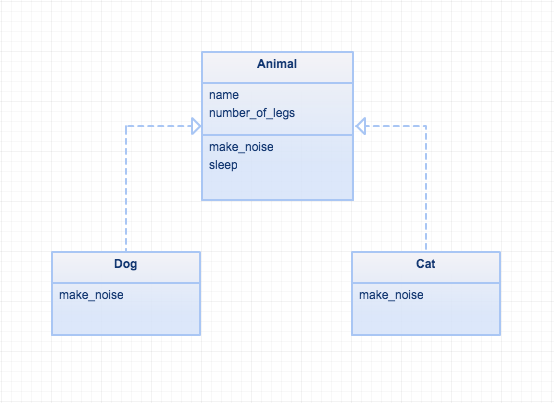What is polymorphism? I’ve found that this question in particular is asked quite frequently in tech interviews. I was asked this in a phone interview once and I did not know the answer to this unfortunately. I believe that it was this question that prevented me from getting to the next stage of the interview, so of course I decided to look into it.

Polymorphism essentially means many forms and is one of the fundamental features of object oriented programming. It lets us automatically do the correct behavior even if what we’re working with could take one of many different forms, simply put; it means being able to send the same message and get different results. Here’s the most basic example I’ve found; the + operator.
In Ruby the + operator will behave differently depending on how you use it.
For example, lets say you have two variables; a and b.
If the two variables are integers, the + operator will numerically add them.
a = 1
b = 2
a + b
=> 3However, what if the two variables were strings instead?
a = "Hello "
b = "World"
a + b
=> "Hello World"As you can see, using + operator for strings will concatenate them instead.
Now this is a basic example of how polymorphism works and is built into a lot of programming languages, but we can use the same idea with our own classes and objects.
Here is an example of a polymorphic association:
class Animal
def make_noise
"Some noise"
end
def sleep
puts "#{self.class.name} is sleeping."
end
end
class Dog < Animal
def make_noise
'Woof!'
end
end
class Cat < Animal
def make_noise
'Meow!'
end
endLets say we have a simple inheritance hierarchy. There is an Animal superclass and two descendant subclasses, a Cat and a Dog. Each of these three classes has its own implementation of the make_noise method. The implementation of the method of the descendants replaces the definition of a method in the Animal class.
class Dog < Animal
def make_noise
'Woof!'
end
endThe make_noise method in the Dog class replaces the make_noise method of the Animal class. The idea is that even though the Dog class is inheriting from the Animal class and would therefore already have access to the make_noise method, the Dog class will have its own specialized version of that method which is unique to that particular class. This is referred to as overiding the method of the superclass, which just means you write it again.
This means is that the method will change its behaviour depending where it was originally instantiated from. Now you may wonder why this would be useful.. Here is an example:
[Animal.new, Dog.new, Cat.new].each do |animal|
puts animal.make_noise
end
=>
Some noise
Woof!
Meow!If you had an array of Animal, Dog or Cat objects as shown above, you can call the make_noise method on all of them and it will return the correct output as expected. While this is a relatively simplified example, you can see why this would be useful if we had an array of a thousand of these objects. We wouldn’t need to look into what class they were originally instantiated from, we just know that it works.
